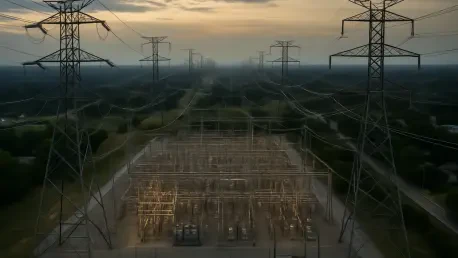Utility incentives in regional transmission organizations (RTOs) have been fundamental in promoting cooperation among energy companies. These incentives, often represented as Return on Equity (ROE) adders, not only boost utility revenues but also support the improvement and expansion of the energy grid. However, recent industry assessments and regulatory discussions suggest that these financial motivations warrant reconsideration. This analysis explores the intricate dynamics of this evolving landscape, evaluating economic impacts and regulatory changes while projecting future industry trajectories.
Contextual Framework for Utility Incentives
Historically, utility incentives were designed to counterbalance the complexities of integrating new transmission infrastructure with existing energy networks. By providing financial benefits like ROE adders, the energy sector aimed to foster regional collaboration and enhance grid reliability. With these policies in place, energy suppliers could afford necessary upgrades and expansions without overwhelming financial burdens. However, as the energy landscape shifts toward sustainability and market fairness, the justification for maintaining these incentives comes under scrutiny. Understanding this context is essential to grasp the current discussions surrounding potential modifications.
Evaluating Economic Dynamics and Incentive Structures
Financial Implications and Consumer Costs
The economic debate over ROE adders hinges on their influence on utility company behavior and consumer energy costs. Critics argue that these incentives inflate consumer bills since utilities might independently choose RTO participation due to inherent market benefits. This viewpoint gains support from analyses predicting financial savings from reduced or eliminated incentives, which could consequently ease consumer cost burdens. Conversely, utility companies highlight the necessity of these incentives for sustained infrastructure investments, critical to ensuring consistent grid reliability.
Balancing Growth and Economic Accessibility
Ensuring grid expansion without excessive consumer costs remains a pressing concern. Industry voices emphasize that diminishing financial incentives could slow infrastructure investments, harming both grid reliability and customer costs amid potential national energy challenges. However, past experiences reveal that some utility enterprises efficiently navigate necessary investments, even absent incentives, suggesting potential for reallocation of savings toward innovative grid enhancements.
Regional Variances and Market-Specific Approaches
Diverse regional energy markets require carefully tailored approaches when revisiting utility incentives. While certain regions exhibit high RTO membership density, others confront unique barriers linked to geographical and resource diversity. Innovations in smart grid technology and localized solutions present strategic alternatives, reducing the regional impact of potential changes in incentive policies. Adapting strategies to suit specific market dynamics is key when reconsidering uniform incentive structures across diverse locales.
Shaping Future Energy Incentive Policies
Projected regulatory shifts, technological advances, and rising environmental consciousness are pivotal in restructuring RTO-related incentives. A potential evolution from traditional financial incentives toward performance-based models, aligning with sustainability and resilience objectives, captures industry forecasts. These changes suggest a paradigm shift toward incentivizing outcomes rather than mere participation, prompting utilities to prioritize effective contributions to broader energy goals.
Strategic Insights for Stakeholders
This comprehensive market analysis underscores valuable strategic insights for sector participants rethinking utility incentives for RTOs. Businesses might explore aligning with dynamic regulatory shifts, investing in novel technologies to enhance grid systems without solely relying on traditional financial supports. Consumers stand to benefit from advocating for optimizing resources, aspiring toward balanced and sustainable energy solutions. These insights foster practical navigation strategies within the future energy landscape.
Strategic Reflections and Considerations
In examining the shifts in utility incentives, the discourse reflects broader energy reform themes, where economic concerns, sustainability goals, and consumer interests must harmonize. Engaging stakeholders in forward-looking discussions and crafting adaptive strategies remain vital in addressing this complex narrative. Effectively defined policies that uphold both utility participation and performance have posed a continual challenge, suggesting a roadmap for a resilient, cohesive energy grid moving forward.









